Earth Observer Earth Home Earth Observer Home Editor’s Corner Feature Articles Meeting Summaries News Science in the News Calendars In Memoriam More Archives  9 min read
9 min read
Looking Back on Looking Up: The 2024 Total Solar Eclipse  Credit: NASA’s Glenn Research Center (GRC) Introduction
Credit: NASA’s Glenn Research Center (GRC) Introduction
First as a bite, then a half Moon, until crescent-shaped shadows dance through the leaves and the temperature begins to drop – a total solar eclipse can be felt growing in the atmosphere. As the sky darkens in the few minutes before totality, the sounds of animals begin to dissipate along with the vibrancy of red and orange hues, and we enter the mesopic zone, or twilight vision. All is quiet in these cold, silvery-blue moments, until the Moon lines up perfectly with the Sun from our viewpoint on Earth – an odd quirk of the Moon–Earth system, and an occurrence that does not exist elsewhere in the solar system.
Millions of people gazed up at the sky on April 8, 2024, as a total solar eclipse darkened the skies across a thin ribbon of North America – spanning Mexico’s Pacific coast to the Atlantic coast of Newfoundland, Canada – see Figure 1.
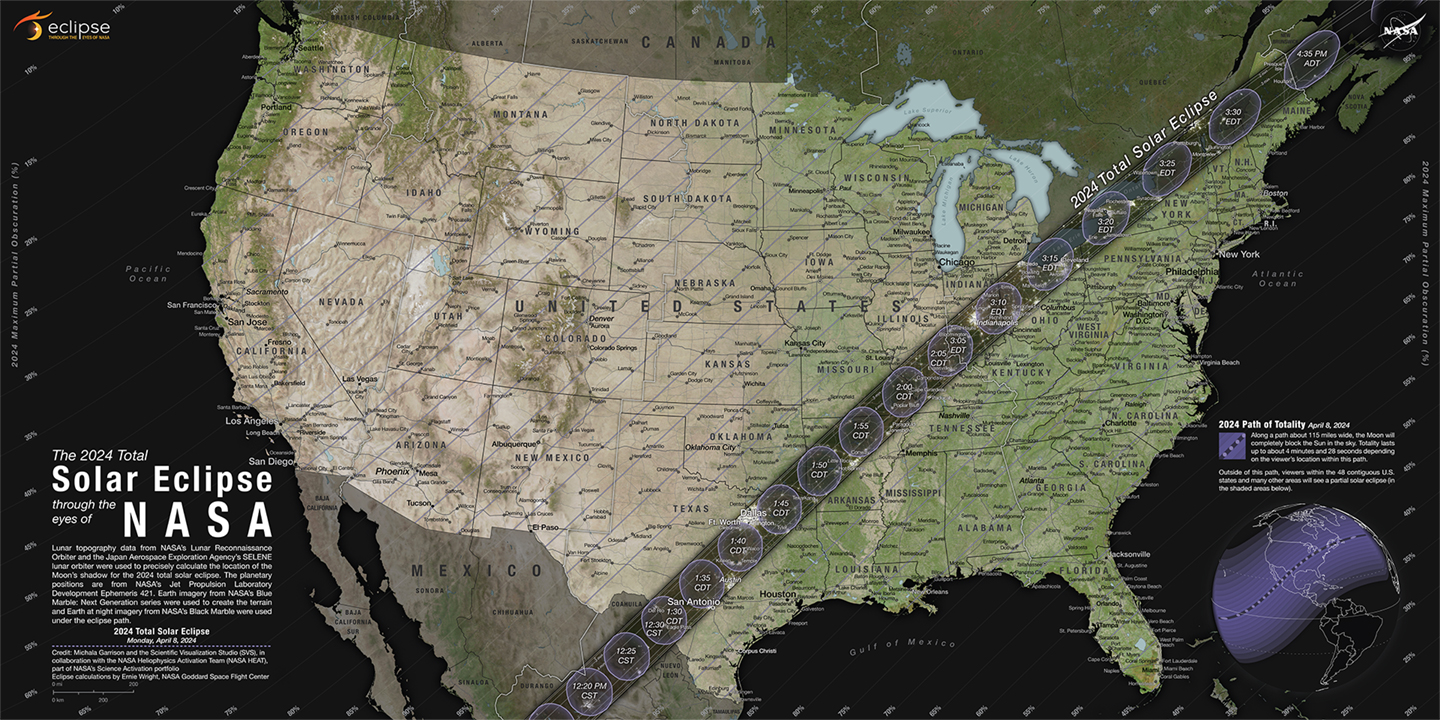 Figure 1. A total solar eclipse was visible along a narrow track stretching from Texas to Maine on April 8, 2024. A partial eclipse was visible throughout all 48 contiguous U.S. states. Figure credit: NASA Scientific Visualization Studio A pearly, iridescent halo lined the perimeter of the Moon as it crossed in front of the Sun, revealing the Sun’s corona – see Photo 1. Solar prominences – bright features made of plasma flowing outwards through tangled structures of magnetic fields along the Sun’s surface – were observable as reddish-pink dots rising from the edges of the eclipsed Sun – see Photo 2.
Figure 1. A total solar eclipse was visible along a narrow track stretching from Texas to Maine on April 8, 2024. A partial eclipse was visible throughout all 48 contiguous U.S. states. Figure credit: NASA Scientific Visualization Studio A pearly, iridescent halo lined the perimeter of the Moon as it crossed in front of the Sun, revealing the Sun’s corona – see Photo 1. Solar prominences – bright features made of plasma flowing outwards through tangled structures of magnetic fields along the Sun’s surface – were observable as reddish-pink dots rising from the edges of the eclipsed Sun – see Photo 2.
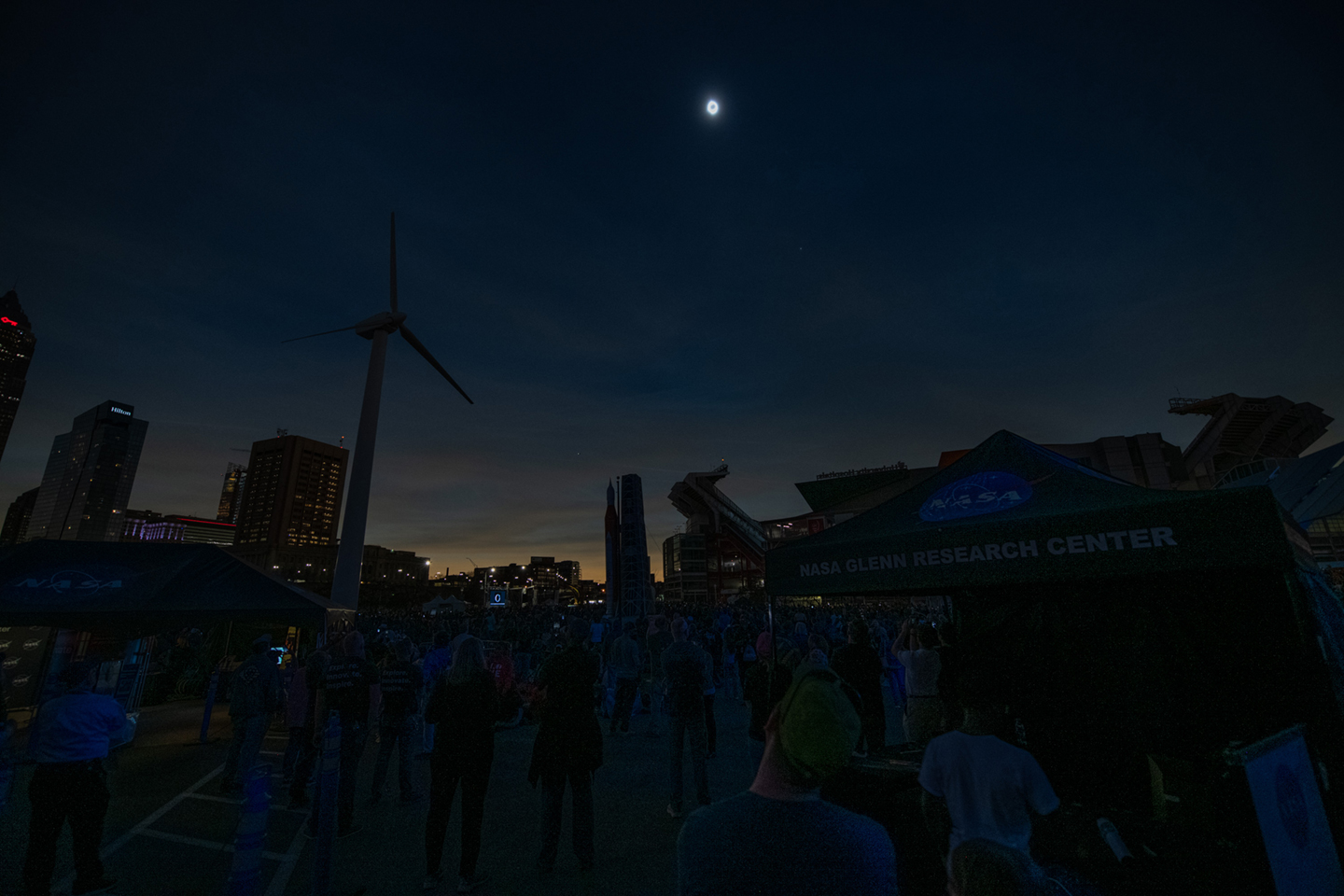 Photo 1. The moment of totality in Cleveland, OH. Photo credit: NASA’s Glenn Research Center (GRC)
Photo 1. The moment of totality in Cleveland, OH. Photo credit: NASA’s Glenn Research Center (GRC) 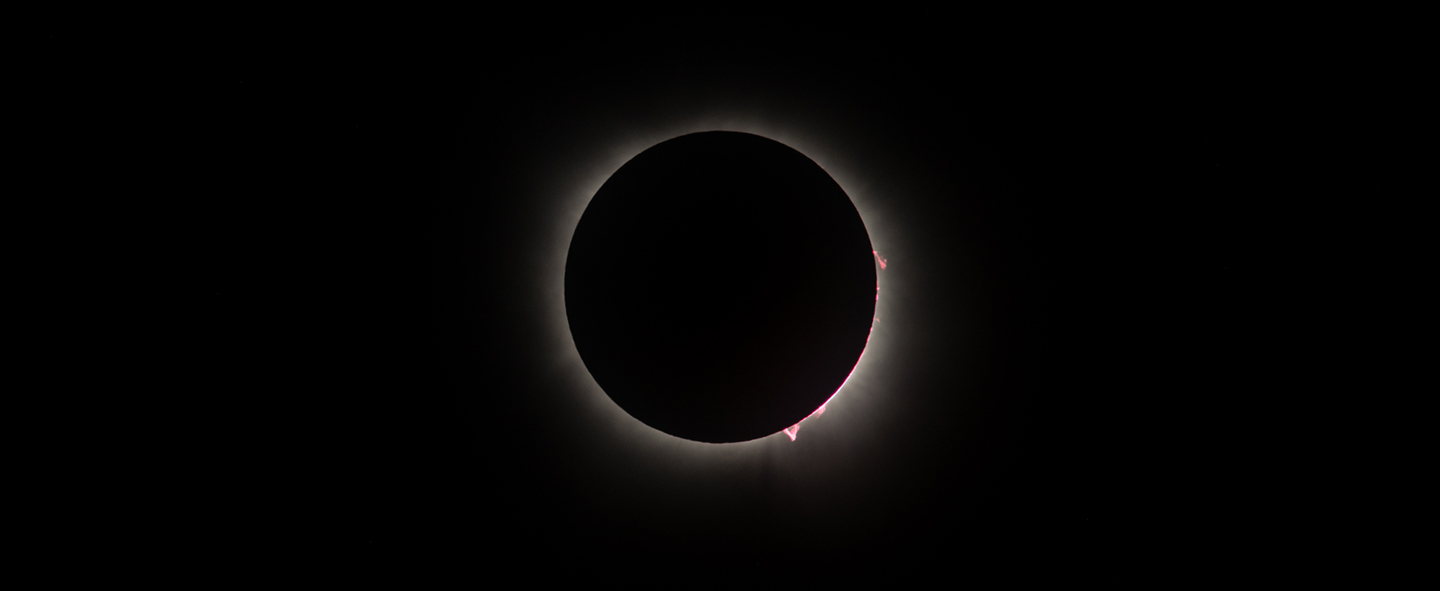 Photo 2. Solar prominence [lower right of the solar disc] seen during totality in Cleveland, OH. Photo credit: GRC Snapshots of NASA Science Outreach Along the Path of Totality
Photo 2. Solar prominence [lower right of the solar disc] seen during totality in Cleveland, OH. Photo credit: GRC Snapshots of NASA Science Outreach Along the Path of Totality
Over 400 NASA staff took up positions along the path of totality, hosting various events to engage the public in outreach activities spanning the scope of NASA Science. NASA staff hosted 14 “SunSpot” locations across 7 states (Texas, Arkansas, Ohio, Indiana, Pennsylvania, New York, and Maine), including 224 NASA engagement and Science Activation events. As an example, Zoe Jenkins [NASA Headquarters/Arctic Slope Regional Corporation (ASRC) Federal—Graphic Designer] was stationed in Maine to view the eclipse –see Photos 3–4. More information about events at these SunSpots is available at the eclipse website. The Science Activation Program furthered NASA’s message, reaching all 50 states through public events by sharing information and providing professional development programming for educators. (To learn more about NASA’s Science Activation Program, see NASA Earth Science and Education Update: Introducing the Science Activation Program, The Earth Observer, 35:6, 6–12.)
 Photo 3. NASA Eclipse celebration at the SunSpot in Houlton, ME. Photo credit: Zoe Jenkins/NASA Headquarters (HQ)/Arctic Slope Regional Corporation (ASRC) Federal
Photo 3. NASA Eclipse celebration at the SunSpot in Houlton, ME. Photo credit: Zoe Jenkins/NASA Headquarters (HQ)/Arctic Slope Regional Corporation (ASRC) Federal 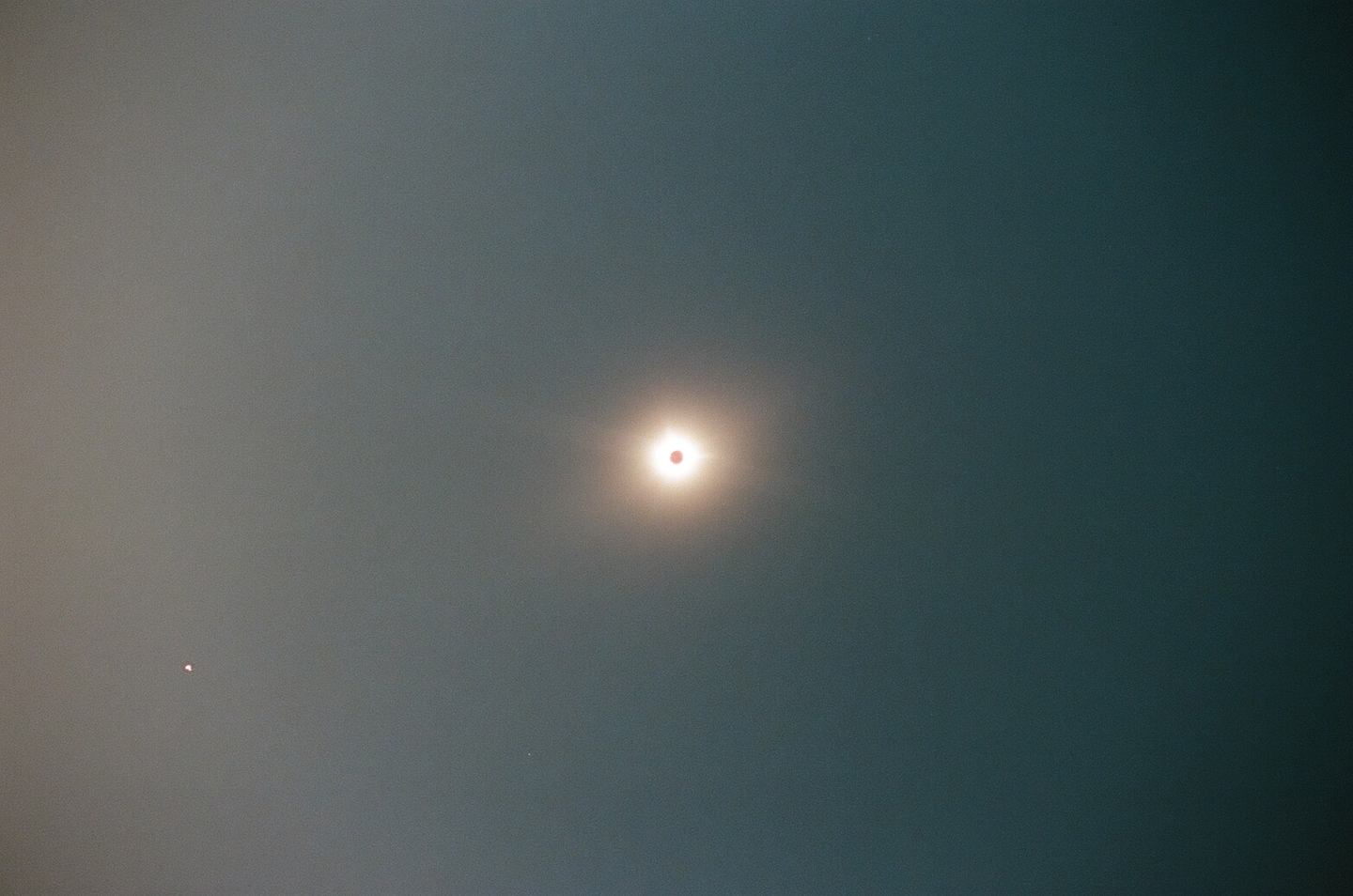 Photo 4. View of the black hole of the Moon’s shadow over the Sun during totality in Houlton, ME. Photo credit: Zoe Jenkins Among the SunSpot locations across the path of totality, NASA’s Science Support Office (SSO) staffed events at two of them: in Cleveland, OH and Kerrville, TX.
Photo 4. View of the black hole of the Moon’s shadow over the Sun during totality in Houlton, ME. Photo credit: Zoe Jenkins Among the SunSpot locations across the path of totality, NASA’s Science Support Office (SSO) staffed events at two of them: in Cleveland, OH and Kerrville, TX.
The Great Lakes Science Center and its two partners – NASA’s Glenn Research Center (GRC) and the Cleveland Orchestra – presented “Total Eclipse Fest 2024,” a three-day celestial celebration at North Coast Harbor in downtown Cleveland beginning April 6 and culminating on the day of the eclipse. The event included free concerts, performances, speakers, and hands-on science activities.
At the heart of the festival was the “NASA Village,” an immersive experience featuring the agency’s major missions and projects aimed at advancing space exploration and revolutionizing air travel. Figure 2 shows the location of each outreach tent in the village, while Figure 3 provides descriptions of each activity. More than 36,000 attendees visited the NASA village over the three-day event.
Exhibits focused on innovations in aeronautics, space, solar, and lunar science, and best practices for ensuring a safe solar eclipse viewing experience. Through virtual and augmented simulations, attendees had the opportunity to take a supersonic flight, walk on Mars, and visit the International Space Station. Attendees of all ages participated in hands-on activities and talked to NASA scientists and engineers about their work and how to join the NASA team. Attendees could also walk through Journey to Tomorrow, a traveling exhibit complete with interactive English and Spanish-language content, and see an Apollo-era Moon rock. Visitors also explored large-scale, inflatable displays of the X-59 plane designed to quiet supersonic air travel, the Space Launch System rocket slated to take the first woman and person of color to the Moon, and a Mars habitat concept. Throughout the NASA Village, attendees could take advantage of several photo opportunities, including iconic NASA cutouts and displays. NASA also hosted astronaut autograph signing sessions, as well as special guest “meet and greets.”
 Figure 2. Map of the “NASA Village” at the Eclipse festival in Cleveland, OH, hosted by GRC. See Figure 3 for activity descriptions. Figure credit: GRC
Figure 2. Map of the “NASA Village” at the Eclipse festival in Cleveland, OH, hosted by GRC. See Figure 3 for activity descriptions. Figure credit: GRC 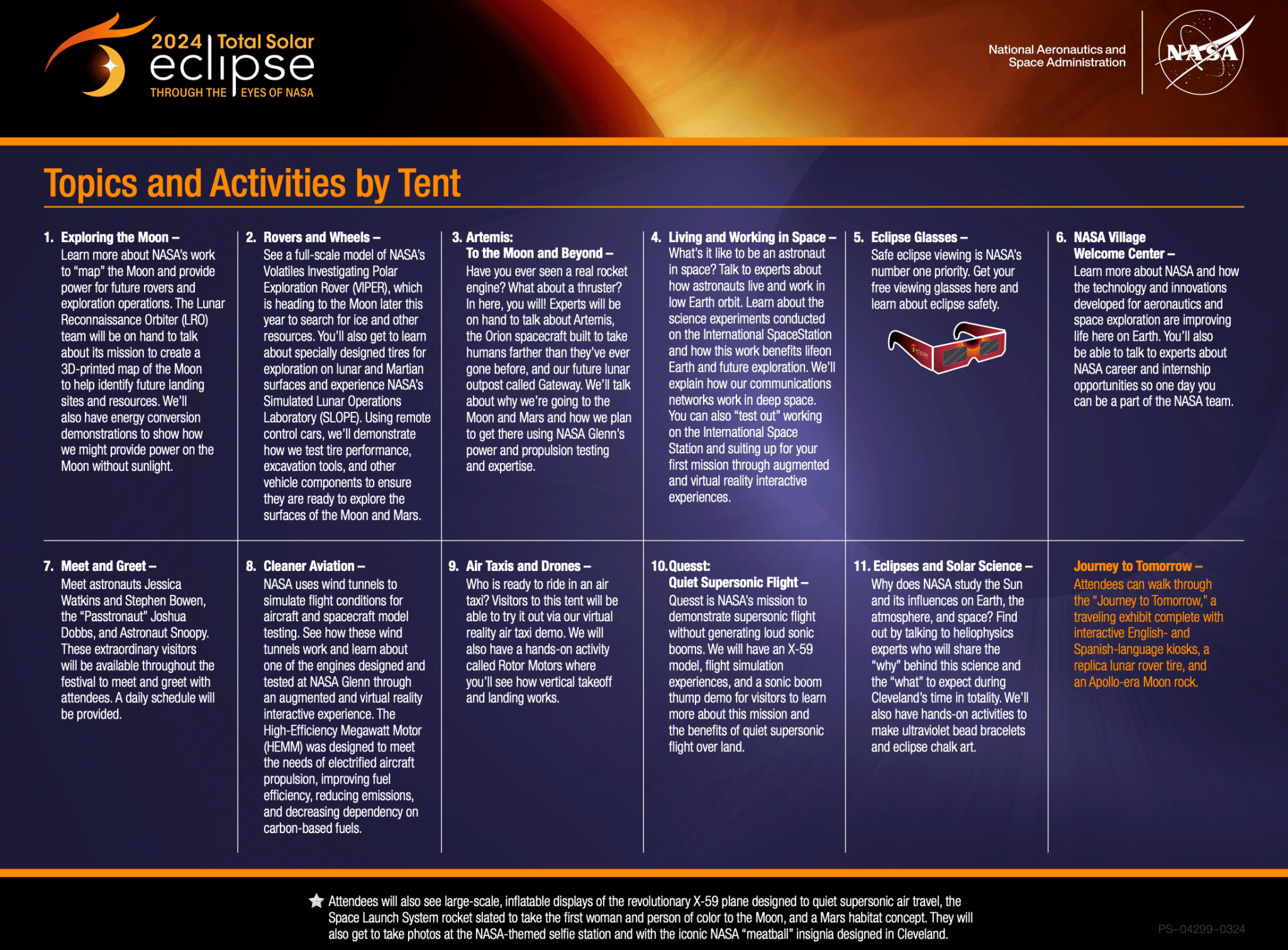 Figure 3. Descriptions of each outreach activity stationed at individual tents within the NASA Village over the three-day festival. See Figure 2 for map. Figure credit: GRC A View of the Eclipse from Cleveland
Figure 3. Descriptions of each outreach activity stationed at individual tents within the NASA Village over the three-day festival. See Figure 2 for map. Figure credit: GRC A View of the Eclipse from Cleveland
In Cleveland, the eclipse began at 1:59 PM EDT, with totality spanning 3:13–3:17 PM. The eclipse concluded at 4:28 PM. SSO staff supported total eclipse outreach from April 5–9, specifically engaging attendees at the Solar Science tent within the NASA Village and providing information about eclipse safety and heliophysics, and handing out items such as the NASA Science calendar, NASA tote bags, and other outreach materials. SSO also supported a NASA photo booth with eclipse-themed props and took hundreds of souvenir photos for visitors to remember their time at the festival – see Photos 5–9.
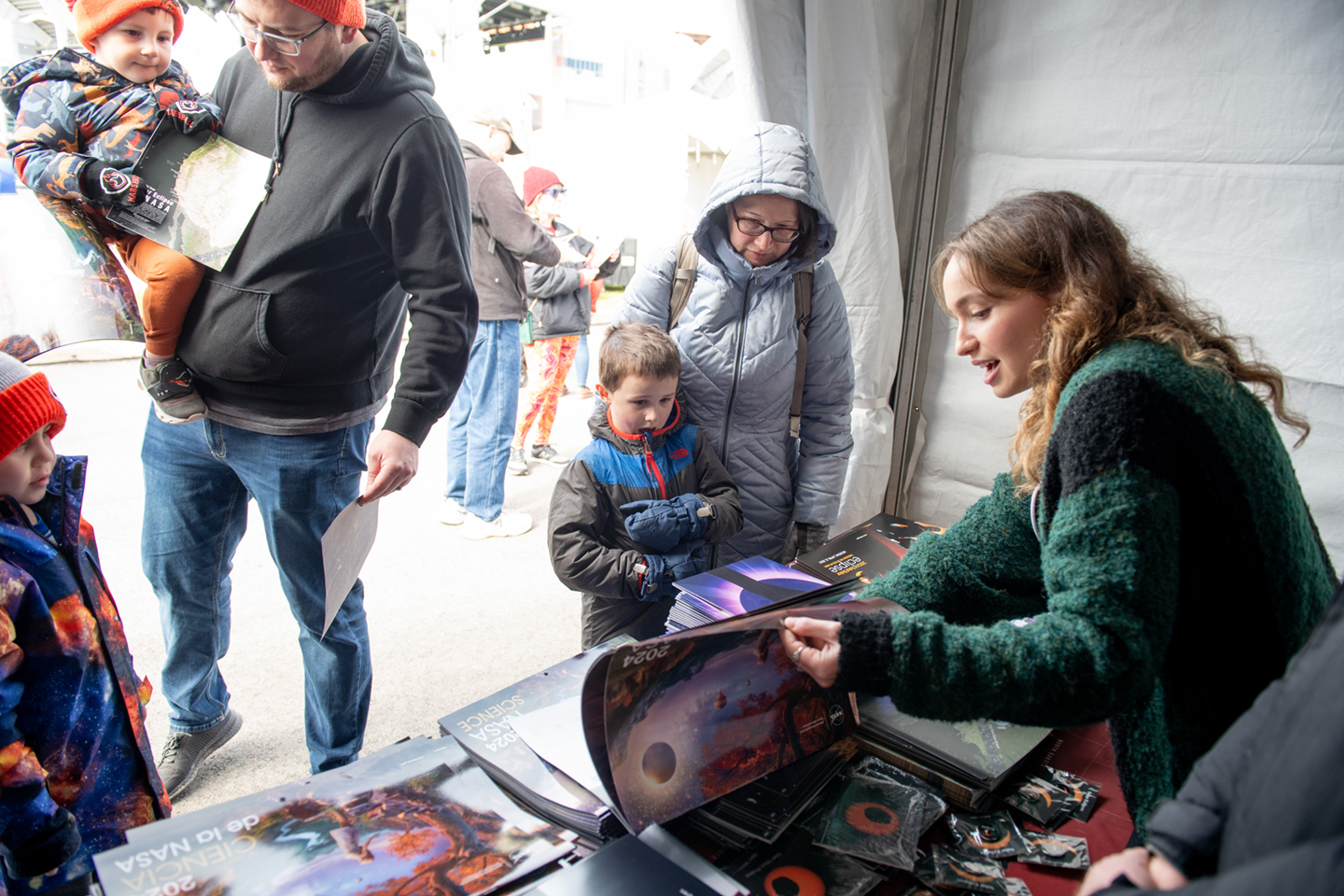 Photo 5. SSO staff member Dalia Kirshenblat [NASA’s Goddard Space Flight Center (GSFC)/Global Science and Technology Inc.(GST)] handed out NASA Science calendars, eclipse glasses, posters, and other NASA outreach materials. The materials informed attendees about eclipse viewing safety and shared NASA science, engaging in topics that explained how eclipses occur. Photo credit: GRC
Photo 5. SSO staff member Dalia Kirshenblat [NASA’s Goddard Space Flight Center (GSFC)/Global Science and Technology Inc.(GST)] handed out NASA Science calendars, eclipse glasses, posters, and other NASA outreach materials. The materials informed attendees about eclipse viewing safety and shared NASA science, engaging in topics that explained how eclipses occur. Photo credit: GRC 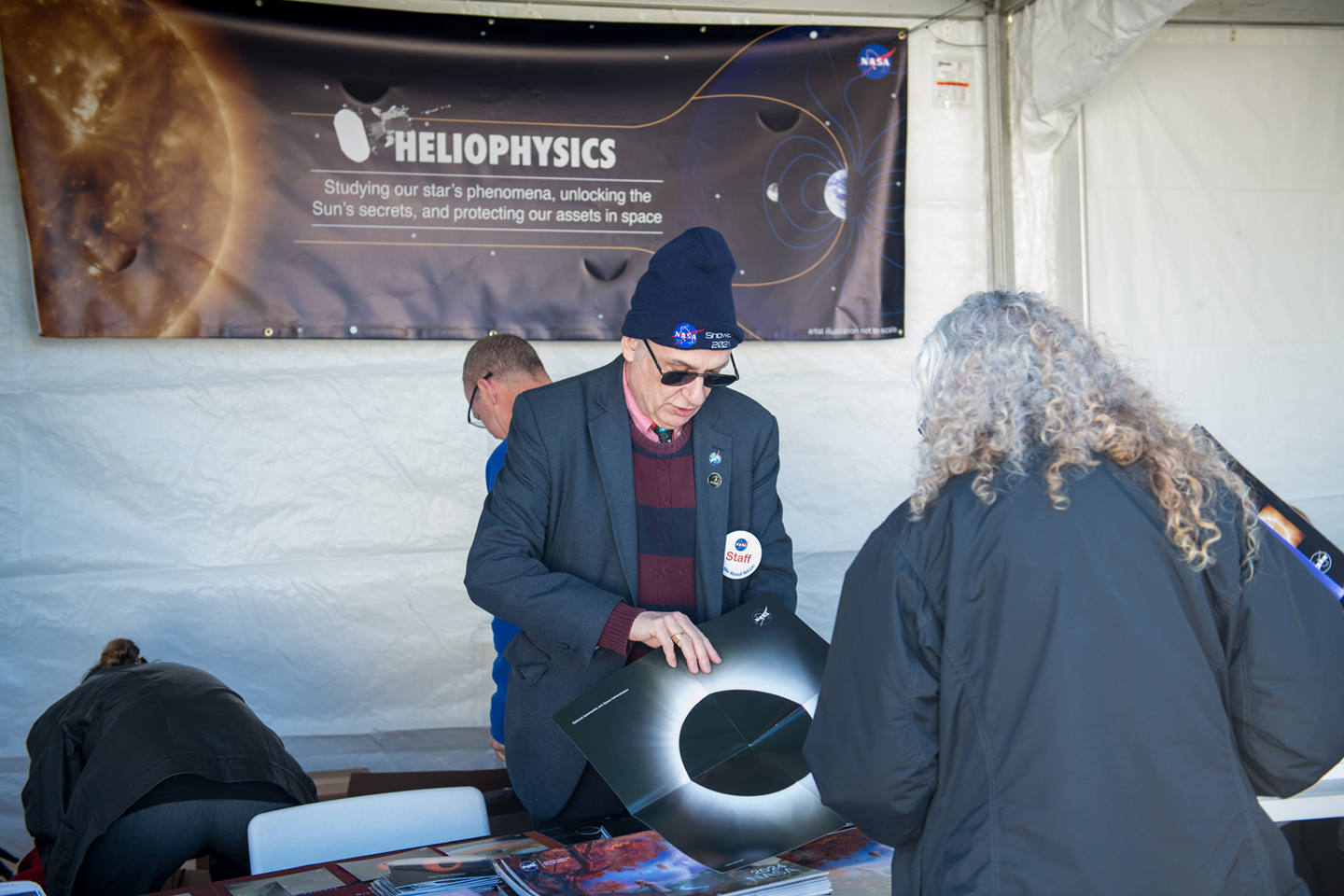 Photo 6. Jack Kaye [NASA HQ—Associate Director for Research, Earth Science Division (ESD)] hands out eclipse posters and other outreach materials to attendees at Eclipse Fest 2024. Photo credit: GRC
Photo 6. Jack Kaye [NASA HQ—Associate Director for Research, Earth Science Division (ESD)] hands out eclipse posters and other outreach materials to attendees at Eclipse Fest 2024. Photo credit: GRC 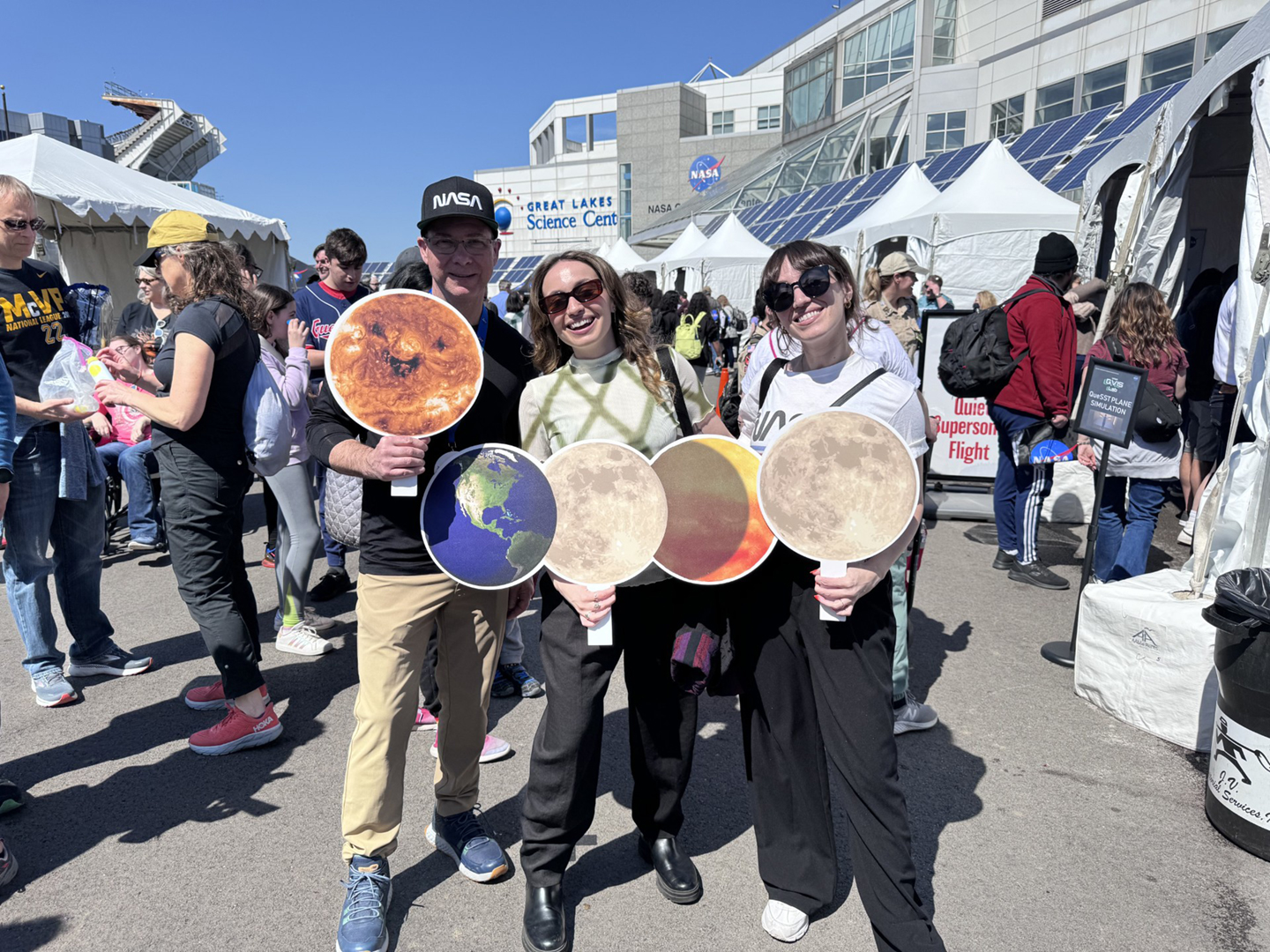 Photo 7. Steve Graham [GSFC/GST], Dalia Kirshenblat, and Danielle Kirshenblat [Space Telescope Science Institute (STScI)] pose with NASA SSO photo booth props at Eclipse Fest 2024. SSO staff took hundreds of pictures of visitors with the photo booth props as keepsakes. Photo credit: NASA
Photo 7. Steve Graham [GSFC/GST], Dalia Kirshenblat, and Danielle Kirshenblat [Space Telescope Science Institute (STScI)] pose with NASA SSO photo booth props at Eclipse Fest 2024. SSO staff took hundreds of pictures of visitors with the photo booth props as keepsakes. Photo credit: NASA  Photo 8. Dalia Kirshenblat and Danielle Kirshenblat watching the eclipse begin in Cleveland, OH, at approximately 2:00 PM EDT. Photo credit: NASA
Photo 8. Dalia Kirshenblat and Danielle Kirshenblat watching the eclipse begin in Cleveland, OH, at approximately 2:00 PM EDT. Photo credit: NASA 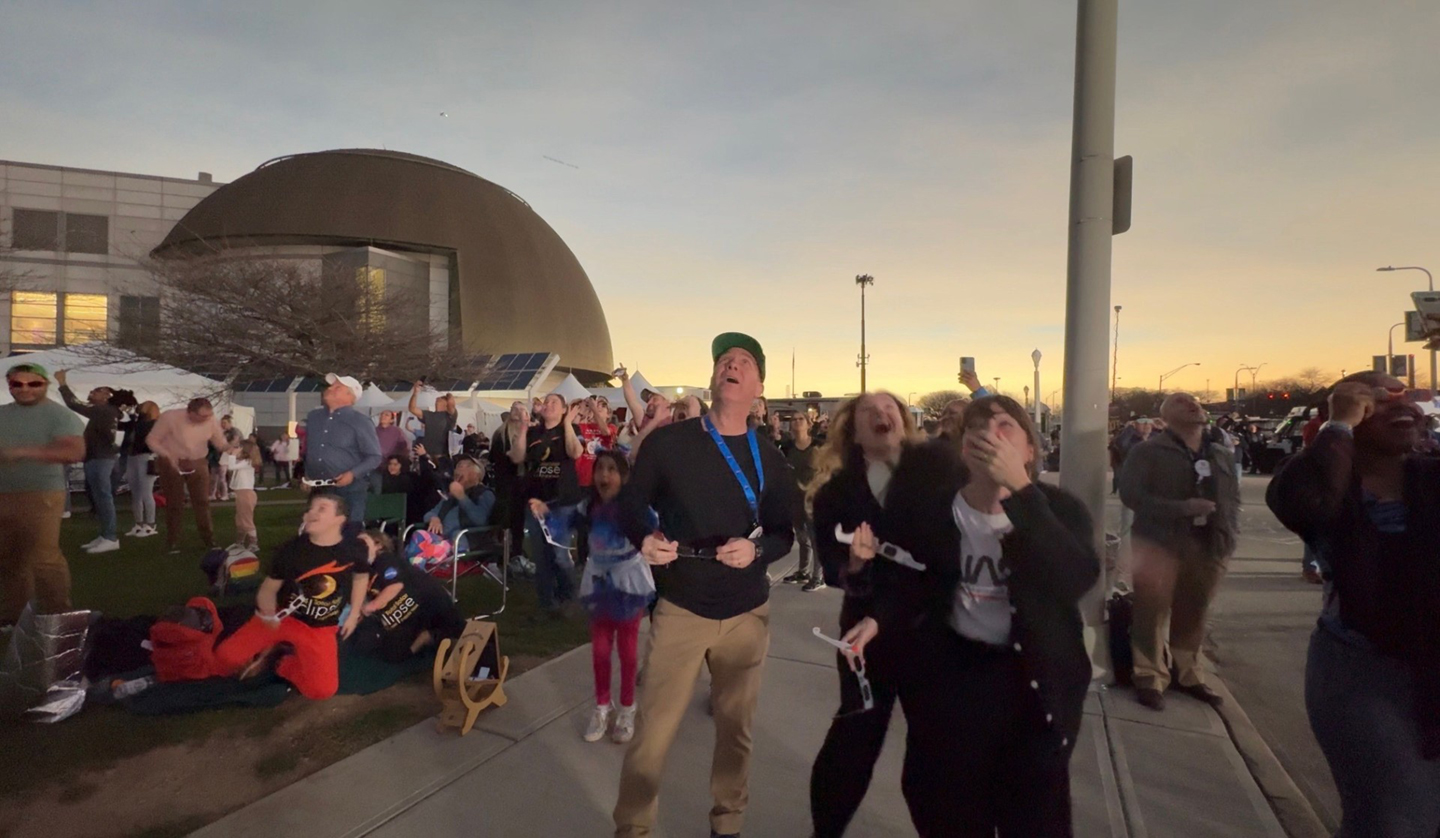 Photo 9. Steve Graham, Dalia Kirshenblat, Danielle Kirshenblat, and other Eclipse Fest attendees gaze at the celestial show unfolding above them as totality begins in Cleveland, OH, at approximately 3:13 PM EDT. Photo credit: Danielle Kirshenblat Eclipse Engagement in Texas
Photo 9. Steve Graham, Dalia Kirshenblat, Danielle Kirshenblat, and other Eclipse Fest attendees gaze at the celestial show unfolding above them as totality begins in Cleveland, OH, at approximately 3:13 PM EDT. Photo credit: Danielle Kirshenblat Eclipse Engagement in Texas
In addition to the Cleveland eclipse festival, SSO staff members supported total eclipse engagement in Kerrville, TX, from April 5–9, including several small events at Cailloux Theatre, Doyle Community Center, Trailhead Garden, and Kerrville-Schreiner Park leading up to the eclipse. (While a bit more remote than Cleveland, Kerville was chosen as a SunSpot location during the total eclipse because it was also in the path of the October 2023 annular eclipse, NASA had outreach activities in Kerville for that eclipse as well). The events culminated on April 8 at Louise Hays Park. NASA’s impact on the community was wide-reaching, engaging approximately 4000 individual interactions with community members and visitors. The feedback was overwhelmingly positive and appreciative. On April 8, SSO provided astronaut handler support for NASA Astronaut Reid Wiseman – who will command the Artemis II Moon mission – during a “photos with an astronaut” session. SSO staff also escorted Wiseman to and from a main stage speaking engagement and the NASA broadcast engagement – see Photos 10–13.
 Photo 10. Ellen Gray [GSFC/KBR—Senior Outreach Specialist] engaging attendees in Kerrville, TX with various NASA Science outreach materials. Photo credit: NASA
Photo 10. Ellen Gray [GSFC/KBR—Senior Outreach Specialist] engaging attendees in Kerrville, TX with various NASA Science outreach materials. Photo credit: NASA  Photo 11. NASA Astronaut Reid Wiseman poses with a potential future astronaut and attendee at the Eclipse event in Kerrville, TX. Photo credit: NASA
Photo 11. NASA Astronaut Reid Wiseman poses with a potential future astronaut and attendee at the Eclipse event in Kerrville, TX. Photo credit: NASA 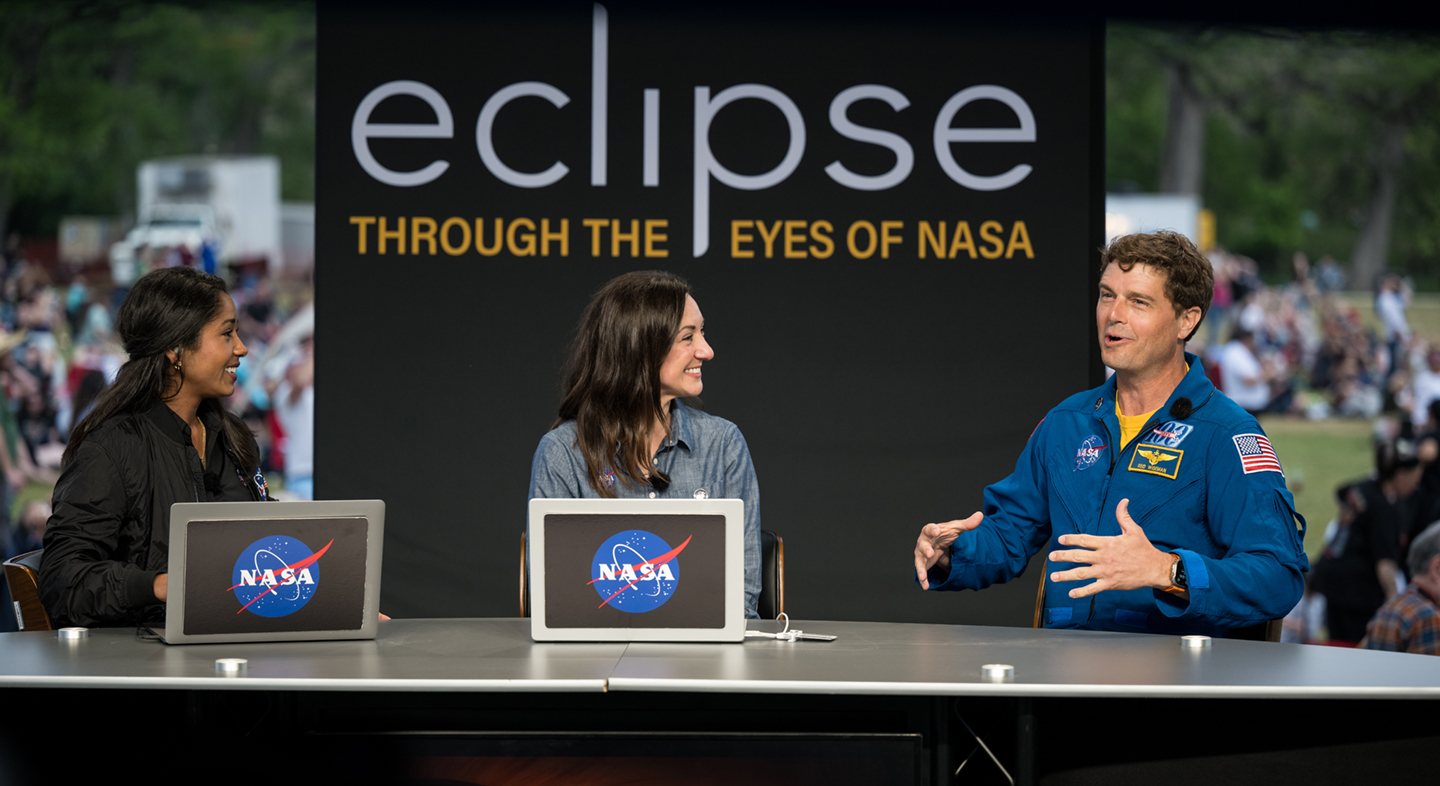 Photo 12. Astronaut Reid Wiseman speaks at a NASA broadcast in Kerrville, TX. Photo credit: NASA
Photo 12. Astronaut Reid Wiseman speaks at a NASA broadcast in Kerrville, TX. Photo credit: NASA 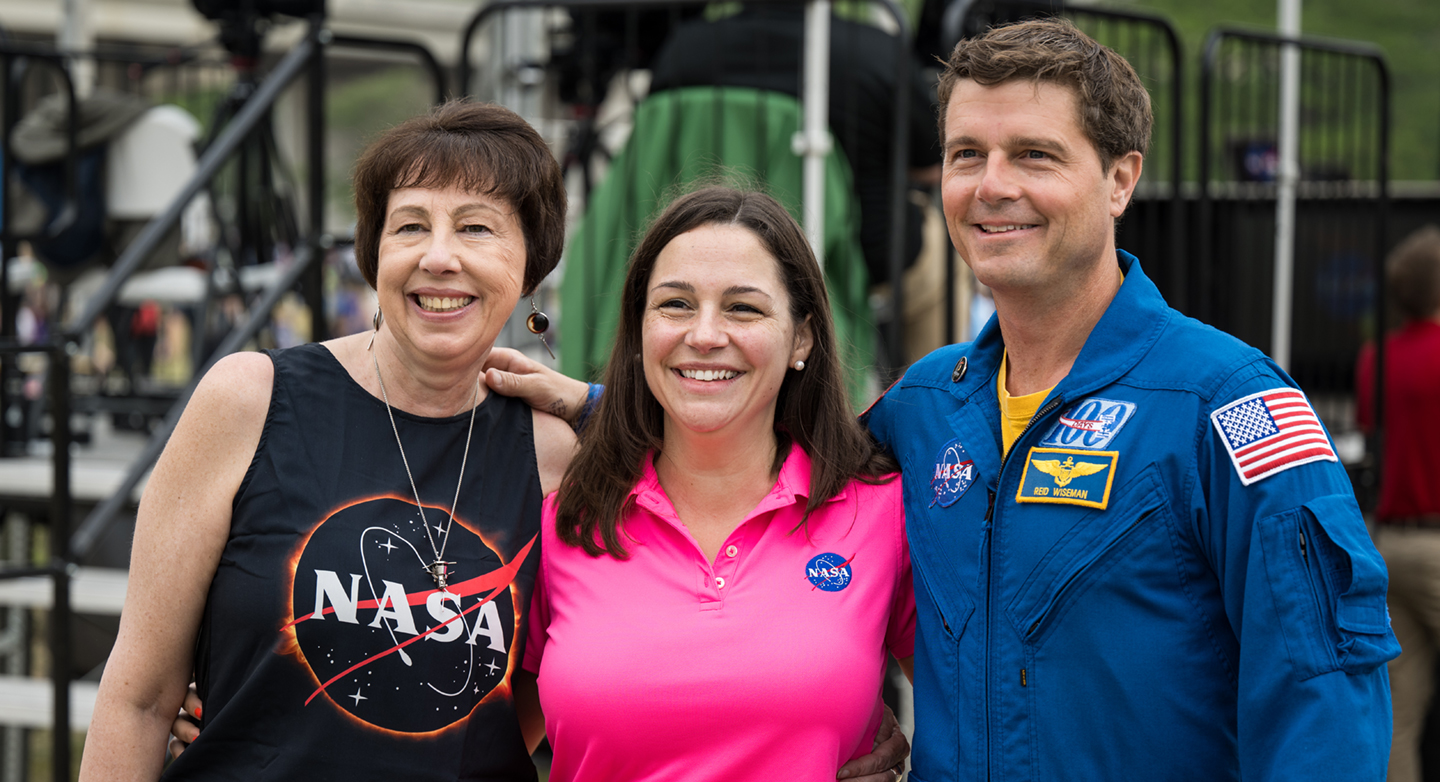 Photo 13. [left to right] Nicola Fox [NASA HQ—Associate Administrator for the Science Mission Directorate (SMD)], Alex Lockwood [NASA HQ—Strategic Engagement Lead], and Astronaut Reid Wiseman. Photo credit: NASA NASA Science Engagement Across the Agency
Photo 13. [left to right] Nicola Fox [NASA HQ—Associate Administrator for the Science Mission Directorate (SMD)], Alex Lockwood [NASA HQ—Strategic Engagement Lead], and Astronaut Reid Wiseman. Photo credit: NASA NASA Science Engagement Across the Agency
As millions gazed at totality from the ground, NASA was conducting science from the skies. Atmospheric Perturbations around the Eclipse Path (APEP), a NASA sounding rocket mission, launched three rockets from NASA’s Wallops Flight Facility in Virginia to study how the sudden dip in sunlight that occurs during an eclipse affects the upper atmosphere. Each rocket deployed four scientific instruments that measured changes in electric and magnetic fields, density, and temperature – see Photo 14.
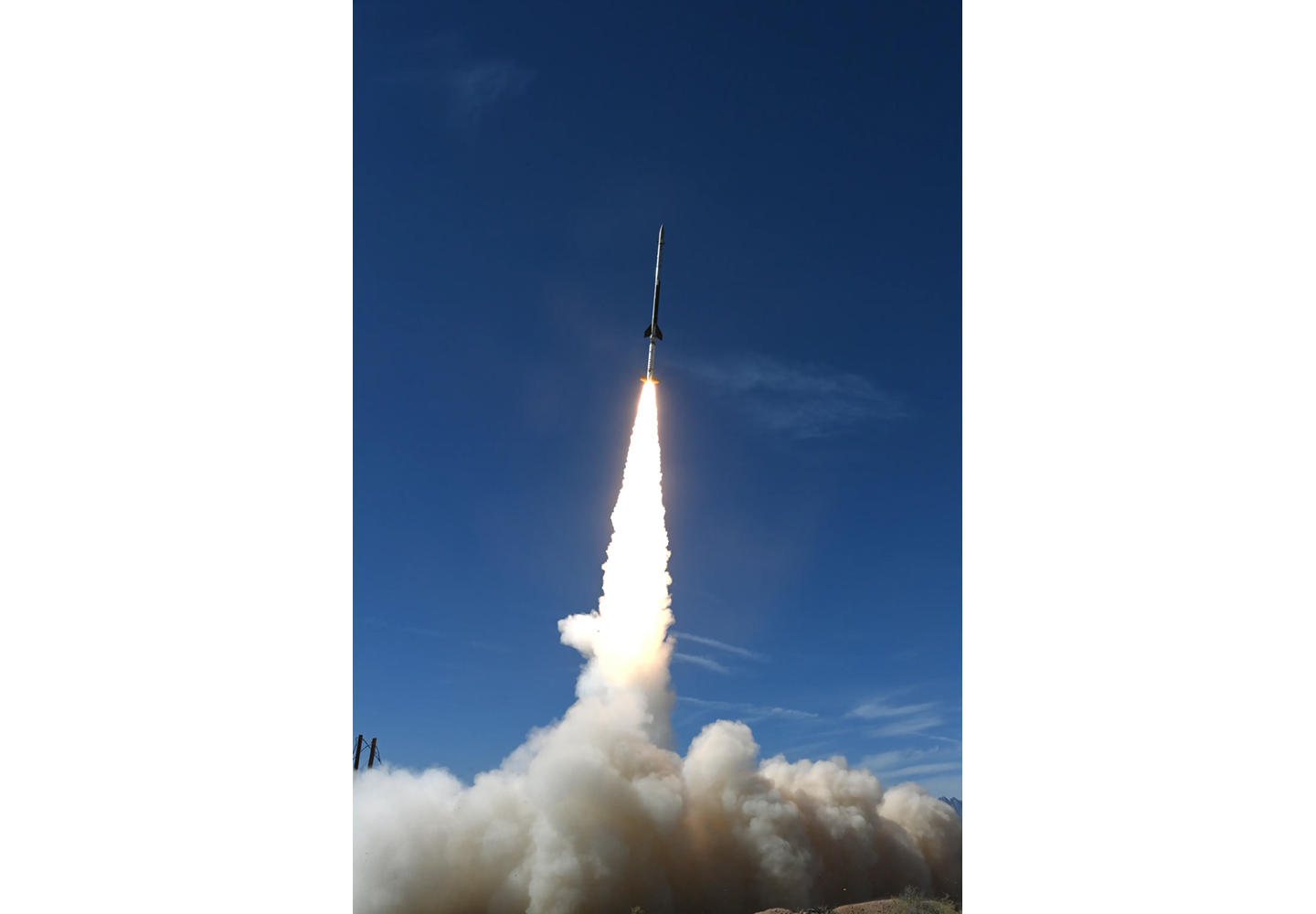 Photo 14. The Atmospheric Perturbations launched around the Eclipse Period (APEP) sounding rocket during the total eclipse on April. This photo shows the third APEP sounding rocket – launched during the October 2023 annular eclipse – leaving the launchpad. Photo credit: WSMR Army Photo As part of the Nationwide Eclipse Ballooning Project, student teams constructed hundreds of balloons and launched them during the eclipse, encouraging students to consider careers in the STEM workforce.
Photo 14. The Atmospheric Perturbations launched around the Eclipse Period (APEP) sounding rocket during the total eclipse on April. This photo shows the third APEP sounding rocket – launched during the October 2023 annular eclipse – leaving the launchpad. Photo credit: WSMR Army Photo As part of the Nationwide Eclipse Ballooning Project, student teams constructed hundreds of balloons and launched them during the eclipse, encouraging students to consider careers in the STEM workforce.
Also, two WB-57 aircraft carried instruments to further extend scientific observations made during the eclipse. By taking images above Earth’s atmosphere, scientists were able to see new details of structures in the middle and lower corona. The observations – taken with a camera that images in infrared and visible light at high resolution and high speed – could improve our understanding of the dust ring around the Sun and help search for asteroids that may orbit near the Sun. The WB-57 flights also carried instruments to learn more about the temperature and chemical composition of the corona and coronal mass ejections – or large bursts of solar material. By flying these instruments on a WB-57, the scientists extended their time in the Moon’s shadow by over two minutes from what could be achieved using ground-based observations. A third experiment used an ionosonde to study the ionosphere – the charged layer of Earth’s upper atmosphere. The device functions like a simple radar, sending out high frequency radio signals and listening for their echo rebounding off the ionosphere. The echoes allow researchers to measure how the ionosphere’s charge changed during the eclipse – see Photo 15.
 Photo 15. Pilots prepare for the 2024 total solar eclipse experiments on the NASA WB-57 aircraft on April 8, 2024 at Ellington Field in Houston, TX. Photo credit: NASA/James Blair The eclipse also provided an opportunity for the public to contribute to the NASA Citizen Science program – a project called Eclipse Soundscapes reached over 900 people during their training programs to prepare for the eclipse. Over 36,000 individual citizen scientists contributed more than 60,000 data submissions across the eclipse path, recording the reactions of wildlife before, during, and after this celestial event.
Photo 15. Pilots prepare for the 2024 total solar eclipse experiments on the NASA WB-57 aircraft on April 8, 2024 at Ellington Field in Houston, TX. Photo credit: NASA/James Blair The eclipse also provided an opportunity for the public to contribute to the NASA Citizen Science program – a project called Eclipse Soundscapes reached over 900 people during their training programs to prepare for the eclipse. Over 36,000 individual citizen scientists contributed more than 60,000 data submissions across the eclipse path, recording the reactions of wildlife before, during, and after this celestial event.
As part of NASA’s Heliophysics Big Year to celebrate the Sun, NASA played a key role in enabling safe participation as well as working with new-to-NASA audiences. NASA’s Science Mission Directorate ordered and distributed 2.05 million eclipse glasses across the country, with distribution locations including K–12 schools, libraries, minority-serving institutions, community events, museums, partner organizations, underserved communities, science centers, and NASA personnel.
As of April 8, Science Activation reached over 2000 educators across the country through programming designed to prepare educators for the eclipse and provide them with educational resources to train students in STEM. NASA broadcasted a livestream of engagement events on NASA+, the NASA App, NASA.gov, and NASA social media channels. By 4:30 PM EDT, NASA’s websites spiked (e.g., nasa.gov, science.nasa.gov, plus.nasa.gov, and ciencia.nasa.gov) with nearly 28.9 million views and 15.6 million unique visitors. At its peak, 1,458,212 people watched the eclipse broadcast live, experiencing the eclipse together through the eyes of NASA. Total viewership as of 4:30 PM EDT was 13,511,924.
NASA’s Office of Communications Engagement Division organized at least 17 in-person and digital partner interactions, including several Major League Baseball games, Google eclipse safety Doodle and search effect, coverage of NASA on NASDAQ’s screen in Times Square, a solar songs request weekend on Third Rock Radio, and a Snoopy visit to the Cleveland sunspot. Several partners also interacted on social media, including Barbie, Cookie Monster, Elmo, Snoopy, LEGO, and other partner accounts.
Conclusion
The 2024 total eclipse brought joy and awe to millions, inspiring so many to look up, be curious about the natural world around them, and explore the sky. The next total solar eclipse will occur in 2026 and will be visible in Spain, a small area of Portugal, as well as Iceland, Greenland, and Russia. We won’t see another total eclipse in the U.S. until 2044.
To view this video please enable JavaScript, and consider upgrading to a web browser that
supports HTML5 video
Movie. Timelapse of the eclipse’s totality in Cleveland, OH. Video credit: Danielle Kirshenblat Dalia Kirshenblat
NASA’s Goddard Space Flight Center/Global Science and Technology, Inc.
dalia.p.zelmankirshenblat@nasa.gov
Details Last Updated Aug 22, 2024 Related Terms Earth Science


